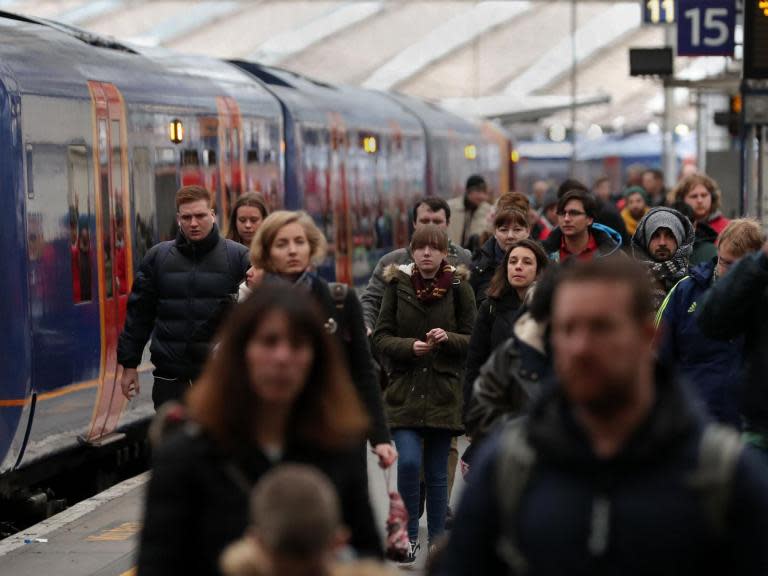What shifting to RPI from CPI means for the average worker, beyond rail fares
There is a statistical gunfight going on within the British establishment. The feud is over an inflation index the public trusts, 100 years after its founding: RPI – the Retail Prices Index. The alternative, CPI – the Consumer Prices Index – is newer, and typically lower than RPI because of the complex formulae used in each case.
The percentage point difference between the two measures may seem like small beer, but a change from RPI to CPI would, according to Unison, strip £350 a year from the wage of the average full-time worker. And the government recently estimated that any shift to CPI indexing of pensions would cost the average pensioner £12,000.
The biggest blow would be to pension funds and other investors in the British index-linked gilts market, currently valued at about £650 billion. If payments on index-linked gilts were shifted from RPI to CPI, assuming a difference between the two of 1 per cent, the change would save the government £3-4bn a year in interest payments, but the bond market, according to one analyst in evidence to the House of Lords, would drop by £150bn.
So there are big stakes in this equivalent of the battle at Tombstone in 1881.
On one side stand the big guns of the British establishment: the chief secretary to the Treasury, the chief economist at the Financial Times, the governor of the Bank of England and the head of the Office for National Statistics (ONS). On the other, an unusual alliance: the Royal Statistical Society (RSS), British workers (represented by the TUC), pensioners, and investors (mainly pension funds) in the £650 billion bond market. They are backed by the “sheriffs” – the judges. More on that below.
At the heart of what is becoming an increasingly rancorous fight between ONS statisticians and economists is an item of women’s clothing: strappy tops. It appears that ONS staff have had a hard time collecting average clothing prices. It’s the failure to get pesky “strappy top” prices right that, apparently, is at the heart of the differences between CPI and RPI.
The debate is complicated. The statistical authorities insist that RPI overstates inflation, but the RSS, Mark Courtney and others accept that the CPI understates inflation. To distil the statistical argument crudely: the formula for RPI in quite a lot of cases uses an arithmetic average known as the Carli. The ONS-preferred formula for CPI uses a geometric average known as the Jevons. To decide on which to plump for – Carli or Jevons – it helps to understand how averages are calculated. If a CPI cricketer were to score four centuries in successive games and then go out for a duck, his geometric average would be zero. If an RPI cricketer were to score four centuries and then go out for a duck, his arithmetic average would be 80. This is not the whole explanation for the differences, but is part of it.
The government, opposed to RPI, are the real bandits – preferring to play fast and loose by engaging in a form of arbitrage. Since 2010, and partly in pursuit of “austerity”, the chancellor, when paying out, say, benefits to the unemployed and disabled, or to public sector pensioners, chooses CPI, effectively lowering payments and government costs. When the chancellor is rounding up money, charging student debtors for their loans or levying duties on beer drinkers, he chooses the higher indicator – RPI. The private sector would like to follow suit, but earlier this year, the court rejected an attempt by BT to switch some of its pension payments from RPI to CPI. Mr Justice Zacaroli ruled on 19 January that the telecoms giant could not use the CPI measure of inflation instead of RPI when determining pension payments.
The feud moved to a new venue this week: the railways. Transport secretary Chris Grayling politicised the question of which statistical indicator rail companies should use to calculate wage rises and costs. RPI is used to raise fares and disadvantages the public, whose wages and prices are raised in relation to CPI. Ministers have not had responsibility for wages or fares since privatisation of the railways in 1994. But Chris Grayling is under pressure from the Treasury. Each year the taxpayer provides about £4bn in subsidies to the privatised rail industry. That subsidy is calculated based on costs incurred by both Network Rail and the rail operators. These costs are in turn based on RPI.
Grayling wants to lower the subsidy and has asked the Office of Rail and Road to in future use CPI-based contracts from 2019. He is demanding that Network Rail and operators lower their costs. Gerald Khoo, an analyst at Liberum, told the FT that if train companies did decline (to use RPI to calculate fare increases), “that’s a multiple of their margin gone ... The reason they need the fares to go up is to offset the inflation in their cost base”.
The real gunfight in Tombstone was over in 30 seconds. This battle will take longer as it now moves to the House of Lords Economic Affairs Select Committee, where their lordships are holding consultative deliberation and adjudication over the issue.
There are problems with both RPI and CPI. The question for citizens is this: who will be on the losing side? Let’s hope their lordships settle on a single inflation indicator that does not allow government to game workers, students, pensioners, rail users or beer drinkers.

 Yahoo News
Yahoo News 

